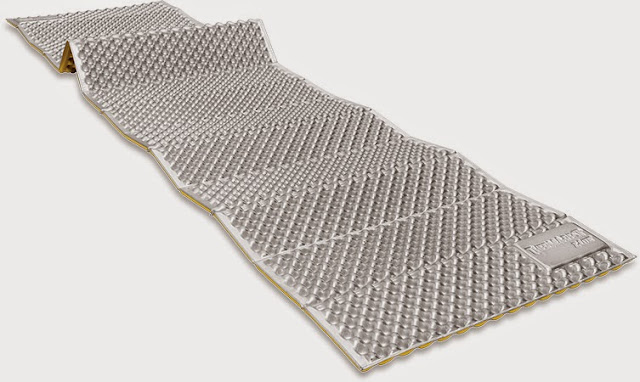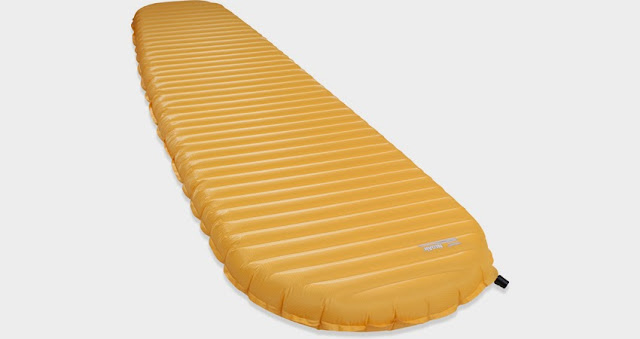5 Tips For Sleeping Comfortable In The Backcountry
In the last few years there has been some real changes in sleeping bag designs. The traditional mummy bag seems to be an old concept of how to stay warm and comfortable in the backcountry. I spent an hour the other day watching a live event from Sierra Designs. Which was awesome!
If you haven't been paying attention to the outdoor industry, there's this awesome thing happening with several companies, and Sierra Designs seems to be on the front end of innovation and design. This Sierra Designs live event was all about sleeping comfortable in the backcountry. This is one thing that I love about their company, and allowing the public to see new product and see discussions on product is really cool.
Now to how we actually sleep comfortable in the backcountry, whether in a tent, under a tarp, or under the stars, there is bit of a process to staying warm and comfortable. In the live event, there was a lot of discussion about what to place under your body from ground tarps, to even placing your pack under your feet. The pack under the feet I didn't really understand, nor really see how that makes you more comfortable, but to each their own.
Here's a five things that i've learned to do, to stay warm and comfortable in the backcountry.
1) Stopping the cold from the ground, coming through to your back.
This is something that may be more important than a nice down bag to sleep in. Here's a scenario. It's fall, and the temperature at night gets into the 30's when you're up in the mountains. The ground is going to get cold, and without something to protect you from the ground, you're going to be cold.
The fix? A nice pad, that actually has some kind of R value for insulation.
The cheap option is to get a closed cell foam pad that has a high R value, like the Z Lite from Thermarest. The downside to a pad like this is how much space it takes up. Not ideal.
The best option is to get a pad that gets your body off the ground. A pad that inflates like the Thermarest NeoAir is an ideal pad. It delivers an R value of 3.2, and is wicked comfortable, packs down incredibly small, and weighs only 12 ounces. Or spend a little more money and get the NeoAir Xtherm, which boasts an R value of 5.7.
2) A Down Fill Sleeping Bag
You could go on and on about sleeping bags, but here's the abbreviated story. Find a bag that has a high fill power, and allows you to move around in the bag. For me this comes down to two options. I've completely abandoned the traditional mummy bag and transitioned to bags that allow more movement when sleeping and while sitting around in the tent during a storm.
Option 1: Sierra Designs Backcountry Bed
Option 2: Nemo Equipment Spoon Shape Bags
The reason i've opted for these two bags is simply for the comfort. The Nemo bag follows a mummy bag style, with a full zipper down the side, but with the spoon shape, it opens up the bag to be incredibly roomy and comfortable. The other thing that I love about the Nocturne is the "blanket" at the neck that allows you to basically tuck yourself in like you would with a comforter. It's the little things!
The Backcountry Bed just by looking at it shows what being comfortable really is about. With a completely zipperless design, the bed allows you to pull the sewn in quilt over you for full coverage, or pull it down to vent. It's wide, and has a sleeve to slip your pad into so the bed stays put when moving around.
3) A Pillow!
I've never understood some of the ultralight concepts that include putting clothing in a stuff sack and hoping the "stuff" moves into the right spot for your head, and is actually comfortable. You wouldn't do it at home, so why do it after you've hiked miles with 40-60 pounds on your back, to just lay your head on the button of your shorts. Invest the $40 on a inflatable pillow, or a down fill backpacking pillow. They weigh very little, and you can stuff them into your sleeping bag compression bag to save space.
4) Hand Warmers in your sleeping bag.
If you are spending a few cold nights in the mountains, being a little warmer makes a big difference. Being warm ultimately results in being more comfortable. I like to open one or two hand warmers and put them in my sleeping bag. I'll throw one down by my feet and put the other by my chest. It takes that little bit of chill that comes when a zipper comes undone, or your feet fall off your pad and are on the ground.
5) The pre bedtime dance...
Again, this is a little trick that i've learned over the years of backpacking. There's the little tricks that you learn about putting on clean socks, wearing an extra layer, wearing a hat, since most heat escapes from you feet and head. But here's a reality moment. Sleeping bags are like coolers. Whatever you put in that's cold is going to be insulated and stay cold, and whatever is hot, will stay hot. If you get into your sleeping bag cold, then you are most likely going to stay cold for most the night. So I like to do a little dance before bed, whether it's jumping jacks, running in place or, doing the Napoleon dance, it gets your blood pumping and will help you get more comfortable and stay warm through the night.
Have other suggestions for staying warm? Leave them in the comments!
If you haven't been paying attention to the outdoor industry, there's this awesome thing happening with several companies, and Sierra Designs seems to be on the front end of innovation and design. This Sierra Designs live event was all about sleeping comfortable in the backcountry. This is one thing that I love about their company, and allowing the public to see new product and see discussions on product is really cool.
Now to how we actually sleep comfortable in the backcountry, whether in a tent, under a tarp, or under the stars, there is bit of a process to staying warm and comfortable. In the live event, there was a lot of discussion about what to place under your body from ground tarps, to even placing your pack under your feet. The pack under the feet I didn't really understand, nor really see how that makes you more comfortable, but to each their own.
Here's a five things that i've learned to do, to stay warm and comfortable in the backcountry.
1) Stopping the cold from the ground, coming through to your back.
This is something that may be more important than a nice down bag to sleep in. Here's a scenario. It's fall, and the temperature at night gets into the 30's when you're up in the mountains. The ground is going to get cold, and without something to protect you from the ground, you're going to be cold.
The fix? A nice pad, that actually has some kind of R value for insulation.
The cheap option is to get a closed cell foam pad that has a high R value, like the Z Lite from Thermarest. The downside to a pad like this is how much space it takes up. Not ideal.
The best option is to get a pad that gets your body off the ground. A pad that inflates like the Thermarest NeoAir is an ideal pad. It delivers an R value of 3.2, and is wicked comfortable, packs down incredibly small, and weighs only 12 ounces. Or spend a little more money and get the NeoAir Xtherm, which boasts an R value of 5.7.
2) A Down Fill Sleeping Bag
You could go on and on about sleeping bags, but here's the abbreviated story. Find a bag that has a high fill power, and allows you to move around in the bag. For me this comes down to two options. I've completely abandoned the traditional mummy bag and transitioned to bags that allow more movement when sleeping and while sitting around in the tent during a storm.
Option 1: Sierra Designs Backcountry Bed
Option 2: Nemo Equipment Spoon Shape Bags
Nemo Nocturn 30
Sierra Designs Backcountry Bed
The Backcountry Bed just by looking at it shows what being comfortable really is about. With a completely zipperless design, the bed allows you to pull the sewn in quilt over you for full coverage, or pull it down to vent. It's wide, and has a sleeve to slip your pad into so the bed stays put when moving around.
3) A Pillow!
I've never understood some of the ultralight concepts that include putting clothing in a stuff sack and hoping the "stuff" moves into the right spot for your head, and is actually comfortable. You wouldn't do it at home, so why do it after you've hiked miles with 40-60 pounds on your back, to just lay your head on the button of your shorts. Invest the $40 on a inflatable pillow, or a down fill backpacking pillow. They weigh very little, and you can stuff them into your sleeping bag compression bag to save space.
4) Hand Warmers in your sleeping bag.
If you are spending a few cold nights in the mountains, being a little warmer makes a big difference. Being warm ultimately results in being more comfortable. I like to open one or two hand warmers and put them in my sleeping bag. I'll throw one down by my feet and put the other by my chest. It takes that little bit of chill that comes when a zipper comes undone, or your feet fall off your pad and are on the ground.
5) The pre bedtime dance...
Again, this is a little trick that i've learned over the years of backpacking. There's the little tricks that you learn about putting on clean socks, wearing an extra layer, wearing a hat, since most heat escapes from you feet and head. But here's a reality moment. Sleeping bags are like coolers. Whatever you put in that's cold is going to be insulated and stay cold, and whatever is hot, will stay hot. If you get into your sleeping bag cold, then you are most likely going to stay cold for most the night. So I like to do a little dance before bed, whether it's jumping jacks, running in place or, doing the Napoleon dance, it gets your blood pumping and will help you get more comfortable and stay warm through the night.
Have other suggestions for staying warm? Leave them in the comments!
The Sierra Designs crew during the live event.








0 comments:
Post a Comment